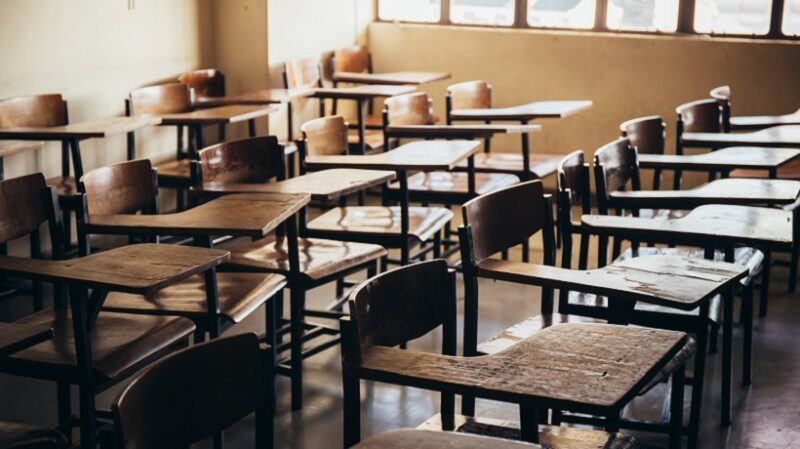
How Poverty Affects The Education System
In the United States, every child must get a baseline education, whether they attend a public school, private school, or are homeschooled. Public education is something every child is entitled to, regardless of their family’s income or situation. Unfortunately, not all children receive the same level of educational opportunities. There are enormous disparities in the U.S. public school system, largely divided by income and race. Poverty and homelessness affect a child’s prospects in many ways, including their educational opportunities. Here’s how poverty and homelessness impact the U.S. public education system.
The Cycle Of Poverty And Education
Once a family is living below the poverty line, it can become progressively more difficult for them to increase their income and break the cycle of poverty. Children who are born into poverty typically lack access to all but the most basic necessities. Poverty also affects a student’s educational prospects. A student living in poverty will typically attend underfunded schools with fewer resources for students who are struggling or showing signs of learning disabilities.
They might also have trouble getting their homework done, due to a lack of resources at home, or a safe, quiet place to study. Their parents or guardians are likely to have less time for school events and for helping with homework. All of these factors can affect a student’s ability to be academically successful, attend college, and pursue their preferred career path. This has a domino effect across generations. When poverty limits someone’s educational options, they cannot earn enough money to help their children have more opportunities. Then, the cycle repeats, and the U.S. public school system continues to help perpetuate inequality.
Richer Schools Get More Resources
When it comes to the U.S. public school system, where you live matters—a lot. Schools are typically funded by taxpayers, largely through property taxes. This is one of the biggest reasons some schools have more resources than others. If you live in an area where property values and taxes are high, your schools are getting more funding, and students are likely to perform better overall and get into better colleges.
Unfortunately, children living in poverty or experiencing homelessness often live in areas where tax revenue is much lower. Schools in these low-income areas have older equipment, pay teachers less, and don’t have the budget for critical services and staff. This means that the children who need the most help are attending the schools that are unable to offer them that leg up.
Homelessness Severely Impacts Student Achievement
Around 1.3 million primary and secondary school students were homeless in 2017. It should come as no surprise that homelessness has a huge impact on student achievement. Students whose families are living within the shelter system, in hotels, out of vehicles, or outdoors are under an enormous amount of stress and uncertainty.
Aside from the stress that comes with having no fixed address and living in poverty, homelessness poses other challenges for students. Homeless students have a higher rate of absenteeism and are 87% more likely to drop out of school than their housed peers. Additionally, they often lack access to the resources needed to study and do homework, such as computers and internet access.
These problems are even more evident for children with learning disabilities, those who live with no close family members, and children who are learning English as a second language. Ultimately, students experiencing homelessness have to beat the odds in order to succeed, rather than having the support they need to overcome all of these challenges.
Underfunded Schools Cannot Offer Comprehensive Support
It’s easy to point the finger at “bad schools”, but the public schools in low-income areas are victimized alongside the students who attend them. The vast majority of the teachers and staff in these schools desperately want to help all their students succeed—especially the most vulnerable students. However, their lack of funding means that they cannot provide students with the comprehensive support that is so often needed to close the educational disparities between impoverished and well-off children.
Teachers at underfunded schools do the best they can with creative problem-solving. Many spend their own money (from their already-low salaries) to buy supplies that could help their students. Some even bring food on test days to help hungry students perform better. But there is only so much teachers and staff can do when there simply isn’t enough money to provide the support that students deserve.
Poverty, Homelessness, And Education Have Their Own Cycle
Because of the way schools are funded, they help to perpetuate the cycle of poverty. Richer areas have better outcomes and it’s rare for students living in poverty to beat the odds and end up in Ivy League universities. Unfortunately, this ultimately affects every area of society, including economic growth and innovation. Some of the brightest minds in the country are being wasted because families cannot break out of the cycle of poverty. Although the basic idea of the public school system is important, these entrenched inequalities mean that some children have many strikes against them before they even enter kindergarten.
School Is A Lifeline For Students Experiencing Homelessness And Poverty
Even though students living in poverty are more likely to struggle academically and attend underfunded schools, these public schools are still a lifeline. They offer free or subsidized meals, teachers who are trying their best to help, and an opportunity to learn. But without funding, there is only so much an individual school can do within the larger system. Over 15% of the U.S. population lives in poverty, and we are not providing enough for low-income families to lift themselves out of poverty. We can and must do better, so that children can thrive at school and go on to do great things.
